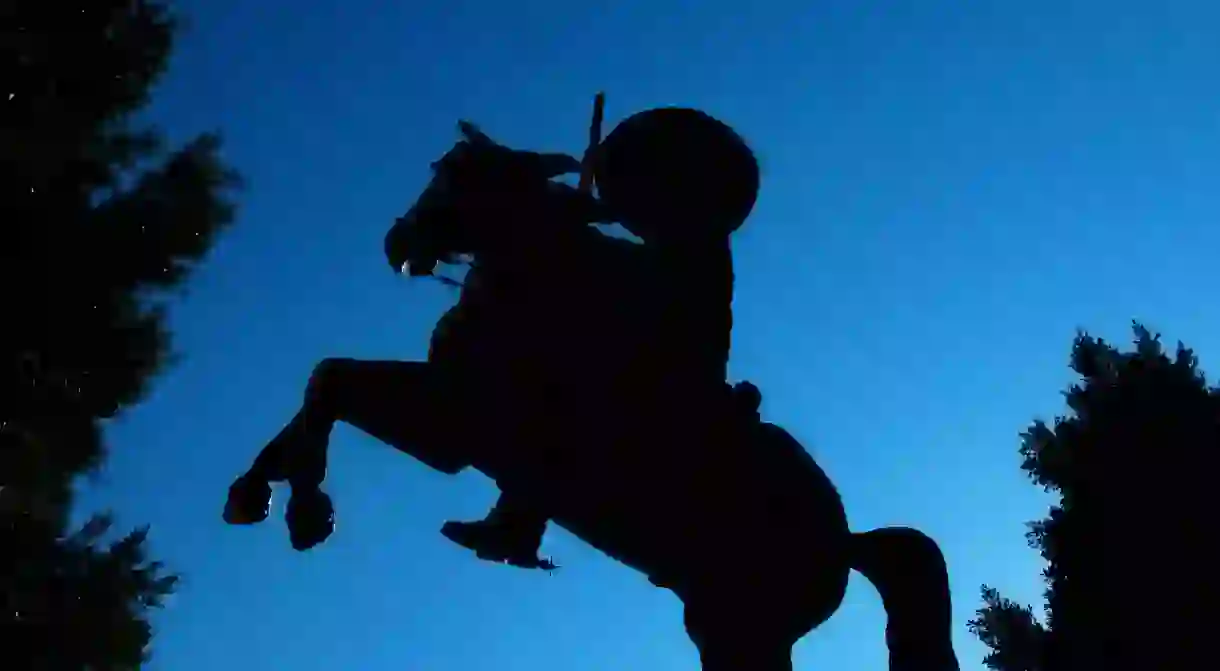A Book-Lover's Guide to Cuernavaca, Mexico's Enchanting Literary City

With its leafy plazas and excellent climate, the Mexican city of Cuernavaca has long provided an escape from the bustle of the nearby Mexican capital. Known as the “City of Eternal Spring,” Cuernavaca is a traditional getaway for the Mexican elite, who retreat to the villas and gardens that surround the city. Yet what really puts the city on the map is its literary history. In the 20th century, the picturesque destination attracted a range of foreign writers, including the British novelist Malcolm Lowry and the Colombian master Gabriel García Márquez.
Under the Volcano
Lowry arrived with his wife in Cuernavaca on the Day of the Dead in November 1936. That year, the novelist produced a short story, “Under the Volcano,” which inspired his 1947 novel of the same name.
Considered by some to be one of the greatest novels of all time, the story follows a day in the life of the alcoholic former British consul and his estranged wife, Yvonne. The city of Cuernavaca is central to the dark masterpiece, and its protagonists visit recognizable locations such as the Palacio de Cortés and Cuernavaca’s central plaza or Zócalo. The story is largely autobiographical, and was inspired by Lowry’s failed attempt to save his marriage during his stay in the city.
Zócalo de Cuernavaca, Hidalgo, Centro, Cuernavaca, Morelos, +52 7773295500

100 Years of Solitude
The Nobel Prize-winning novelist Gabriel García Márquez also had an intimate relationship with the city. The Colombian novelist spent the last five decades of his life in Mexico, and owned a property in Cuernavaca. Although he never set any of his novels in the city, he seemed to be inspired by it. Driving with his family from Mexico City to the beach resort of Acapulco in 1965, García Márquez was just outside the city when he was hit by a life-changing flash of inspiration. According to his own account, the first sentence of his landmark novel, 100 Years of Solitude, suddenly sprang into his mind fully formed:
“Many years later, as he faced the firing squad, Colonel Aureliano Buendia was to remember that distant afternoon when his father took him to discover ice.”
García Márquez turned around and returned home to lock himself away until the novel was complete. Around 12 months later, and $12,000 in debt, he had a masterpiece in his hands.

Can Cuernavaca Turn the Page on its Recent History?
A wave of violence broke out in Cuernavaca in 2010, as local drug traffickers fought for control of the region. Drug war conflicts have raged ever since and the city was declared the most dangerous in Mexico in 2015, topping even Acapulco for that year.
In 2011, the son of Javier Sicilia, Mexico’s most famous living poet, was murdered, alongside six other victims, just outside Cuernavaca. Sicilia wrote a final poem for his son, which was performed at his funeral. He told friends, “Poetry doesn’t exist in me anymore.”

But Sicilia threw himself behind another cause, becoming a vocal critic of both the drug cartels and the government. In his new role as an activist, Sicilia has organized hundreds of events and addressed crowds all over the country. He has spoken out against the military strategy of the government, and has also called for the legalization of drugs, both in Mexico and worldwide.
Despite the recent crisis of crime and security, Cuernavaca’s literary culture is still vibrant. Poetry readings and literary events are held throughout the year. But there is no doubt that the city has lost some of its enchantment. With the looming threat of criminals and disinterested authorities, for the time being at least, Cuernavaca has come to resemble the chaotic city described in Lowry’s masterpiece.













